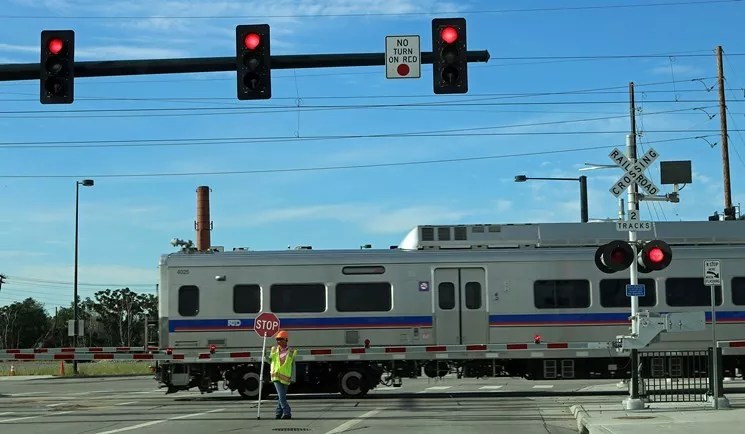
Jeffrey Beall at Flickr

Audio By Carbonatix
A judge has allowed testing to resume on the Gold Line, the light-rail line that will connect Denver with some of its western suburbs. Because of issues at crossing gates on the A Line, which utilizes the same technology, testing on the G Line stopped last July.
The judge’s ruling allows testing to occur “concurrently rather than consecutively” at both lines, says Scott Reed, the Regional Transportation District‘s assistant general manager of communications.
While the judge’s decision is a sign of progress for both the G Line and suburbanites weary of taking the bus into Denver, the most visible sign of the troubles on the A and G lines – attendants at crossing gates – will remain in place for the foreseeable future.
Since April 2016, every crossing gate on the A Line, which connects Denver to the airport, has been manned by a human 24 hours a day, seven days a week, to address a computer glitch that impacts gates. (Denver Transit Partners, the private contractor that built the A, B and G lines, does not divulge how many crossing attendants it employs or how much they are paid.) The attendants were at every crossing on the G Line during the first phase of testing and will return for the next phase. Crossing-gate operations have been approved by the Federal Railroad Administration, Reed says, but they have not yet met the Colorado Public Utilities Commission‘s standards, necessitating the crossing attendants.
“We have not been able to prove that the gate functions meet PUC standards, and that’s part of what we’ll be doing through the testing process,” Reed says. “In general, the gates have been coming down slightly early, within seconds, and staying down slightly long, also within seconds. The PUC has expressed concerns about that in terms of waiting auto traffic.”
RTD will get another chance to prove that the A Line’s crossing gates are up to snuff in February or March, if there are no objections to written testimony that RTD must submit by mid-January.
But Reed isn’t totally confident that the hearing will go in RTD’s favor. “We don’t know for several reasons,” he explains. “Number one, we don’t have specific orders from the PUC yet in terms of what testing will completely entail. Two, you test for a reason, which is you hopefully find stuff that may not be working properly. We may find nothing, we may find some minor things, we may find some things that take time. We just don’t know.”
Know this: Denver residents should become accustomed to seeing orange vests around town.